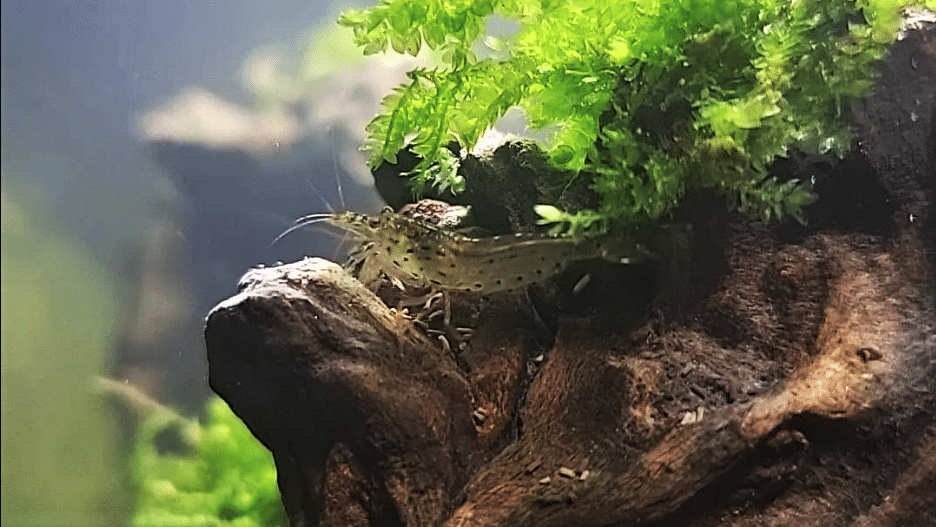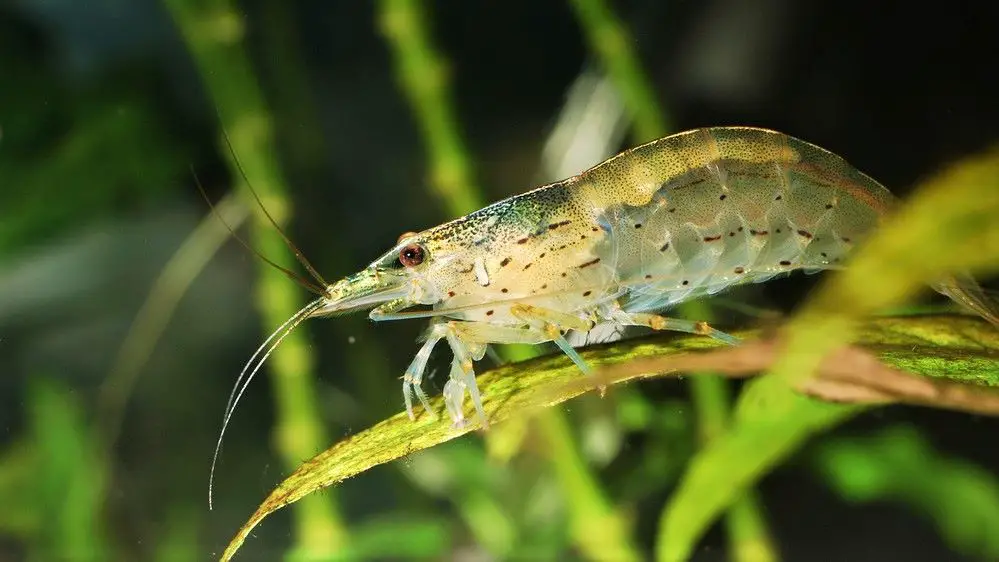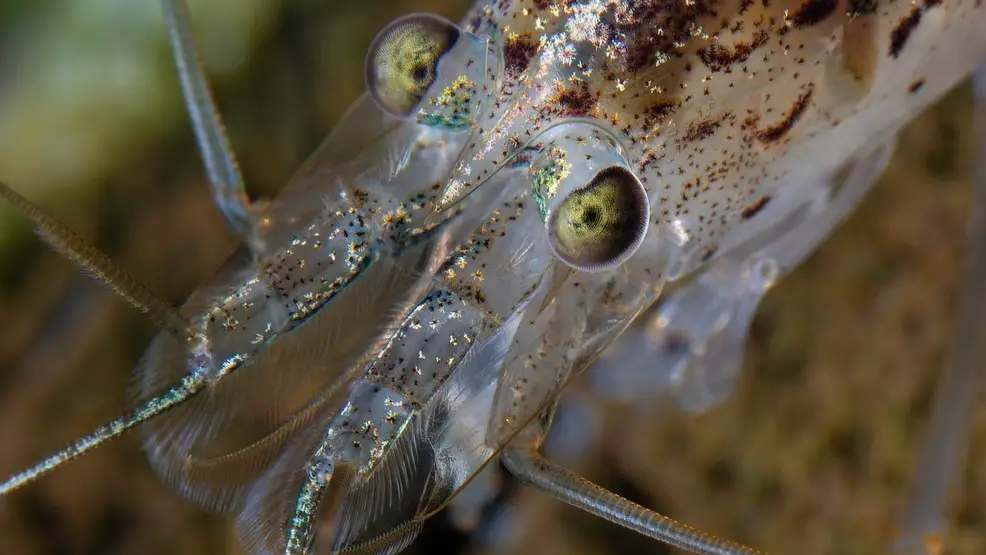Yes, Amano Shrimp are known to be escape artists.
I’ve had my fair share of experiences with the elusive Amano Shrimp. I remember vividly, it was about three years ago when I first noticed this peculiar behavior. I had just introduced a group of Amano Shrimp into my well-established planted tank, expecting them to settle in and start their job of algae control.
But, to my surprise, I woke up the next morning to find a couple of them exploring the living room floor! It was a baffling sight, to say the least.
Over time, I realized that these little creatures were not just adventurous but downright Houdini-like in their escapades. I had to learn the hard way that Amano Shrimp are indeed escape artists.
It took me a few months of trial and error, adjusting tank conditions, and modifying the aquarium setup to finally keep them from making unscheduled tours around the house.
In this blog post, I’ll share my insights and tips on how to prevent your Amano Shrimp from escaping. I’ve learned a lot from my experiences, and I hope to pass on this knowledge to you, so you don’t have to go through the same shrimp-keeping hurdles I did.
Understanding the Natural Behavior of Amano Shrimp
To fully grasp why Amano Shrimp are such escape artists, we first need to delve into their natural behavior. Amano Shrimp, scientifically known as Caridina multidentata, are native to Japan and Taiwan. In their natural habitats, they are accustomed to living in fast-flowing streams and rivers. This environment has shaped their behavior and physical attributes, making them excellent swimmers and climbers.
Amano Shrimp are renowned for their adventurous spirit. They are naturally curious creatures, always on the move, exploring their surroundings, and searching for food. This constant activity is not just a sign of their health but also a testament to their inquisitive nature.
In the wild, Amano Shrimp are known to migrate from freshwater to brackish water during their breeding cycle. This journey often involves climbing over rocks and other obstacles, which explains their adept climbing skills. In an aquarium setting, these climbing skills can translate into escape attempts, especially if the shrimp feel threatened or uncomfortable.
This natural behavior is the first step in managing their escape artist tendencies. By providing an environment that caters to their natural instincts and needs, we can reduce their desire to escape and ensure their well-being in our aquariums.
The Role of Aquarium Conditions in Amano Shrimp Escapes
Aquarium conditions play a crucial role in the behavior of Amano Shrimp, including their propensity to escape. If the conditions in the tank are not to their liking, these shrimp will try to find a way out, using their excellent climbing skills to their advantage.
One of the primary factors that can trigger escape attempts is water quality. Amano Shrimp are sensitive to changes in water parameters such as temperature, pH, and levels of ammonia, nitrite, and nitrate. If these parameters are not within the optimal range, the shrimp may become stressed and look for an escape route.
For instance, a sudden change in temperature or a spike in ammonia levels can make the shrimp uncomfortable, prompting them to leave the water.
The physical environment of the tank can also influence the shrimp’s desire to escape. Amano Shrimp need plenty of hiding spots and areas to explore. If the tank is too bare or overcrowded, the shrimp may feel exposed or stressed, leading to escape attempts. Similarly, if the tank lacks sufficient algae or other food sources, the shrimp may venture out in search of food.
Lastly, the presence of predators or aggressive tank mates can also lead to escapes. Amano Shrimp are peaceful creatures and can become stressed if housed with aggressive or larger fish species. If they feel threatened, their natural response is to try and find a safer environment, which often means trying to leave the tank.
Maintaining optimal aquarium conditions and providing a suitable environment, we can minimize the chances of our Amano Shrimp trying to escape.

How to Modify Your Tank Setup to Prevent Amano Shrimp Escapes
Modifying your tank setup is an effective way to prevent Amano Shrimp from escaping. Here are some strategies that I’ve found to be successful:
Firstly, ensure that your tank has a secure lid. Amano Shrimp are skilled climbers and can easily climb out of the tank if given the opportunity. A tight-fitting lid will prevent them from escaping, but make sure it still allows for adequate ventilation.
Secondly, consider the placement of equipment such as heaters, filters, and air lines. Amano Shrimp can use these as ladders to climb out of the tank. Try to position these pieces of equipment away from the edges of the tank or ensure they are not providing an easy route out.
Thirdly, provide plenty of hiding spots and areas to explore within the tank. This can be achieved by adding live plants, rocks, and driftwood. Not only will this make the shrimp feel more secure, but it will also keep them busy and less likely to attempt an escape.
Next, maintain optimal water conditions. Regularly test the water for pH, temperature, and levels of ammonia, nitrite, and nitrate. Keeping these parameters stable and within the optimal range for Amano Shrimp will make them feel comfortable and less likely to try to escape.
Lastly, be mindful of the other inhabitants of your tank. Amano Shrimp are peaceful creatures and should be housed with other peaceful species. If they feel threatened by aggressive tank mates, they are more likely to try to escape.
Implementing these modifications, you can create a secure and comfortable environment for your Amano Shrimp, reducing their desire to escape.

The Importance of Regular Monitoring in Shrimp Keeping
Regular monitoring is a cornerstone of successful shrimp keeping, especially when dealing with escape-prone species like Amano Shrimp. It’s not just about preventing escapes, but also about ensuring the overall health and well-being of your shrimp.
Monitoring your shrimp regularly allows you to observe their behavior, which can be a good indicator of their health and comfort. Active, exploring shrimp are usually healthy and content, while hiding, lethargic, or unusually aggressive behavior can be a sign of stress or illness.
Regular observation also allows you to spot any potential escape routes that you may have missed. Amano Shrimp are resourceful creatures and can find escape routes in the most unexpected places. By keeping a close eye on your shrimp, you can spot and block these escape routes before they become a problem.
Monitoring the water parameters of your tank is equally important. Regular testing allows you to spot any changes in pH, temperature, or levels of ammonia, nitrite, and nitrate. Sudden changes in these parameters can stress your shrimp and trigger escape attempts. By monitoring your water conditions, you can intervene early and prevent such situations.
Regular feeding is also a part of monitoring. By observing your shrimp during feeding times, you can ensure they are eating well and spot any changes in their appetite. A decrease in appetite can be a sign of stress or illness.
Regular monitoring is essential in shrimp keeping. It allows you to ensure the health and comfort of your shrimp, prevent escapes, and intervene early when problems arise.

Dealing with an Amano Shrimp Escape: Immediate Steps
Despite our best efforts, Amano Shrimp escapes can still occur. If you find your shrimp outside the tank, it’s important to act quickly but calmly. Here are the immediate steps you should take:
Firstly, gently pick up the shrimp using a soft, wet cloth or a net. Avoid using your bare hands as the natural oils on our skin can harm the shrimp. Be careful not to squeeze or drop the shrimp during this process.
Next, quickly but gently place the shrimp back into the tank. It’s best to lower the shrimp into the water slowly, allowing it to readjust to the water conditions.
Once the shrimp is back in the water, monitor it closely for any signs of stress or injury. If the shrimp seems lethargic or unresponsive, it may be in shock. In such cases, it can be helpful to dim the lights and reduce any noise around the tank to help the shrimp recover.
and reduce any noise around the tank to help the shrimp recover.
After the immediate crisis is handled, it’s important to identify how the shrimp escaped in the first place. Check your tank for any potential escape routes, such as gaps in the lid, equipment near the edges of the tank, or even high water levels that allow the shrimp to reach the top of the tank.
The key to dealing with an Amano Shrimp escape is to act quickly but gently, minimize stress for the shrimp, and identify and rectify the cause of the escape to prevent future incidents.

The Impact of Amano Shrimp Escapes on Their Health and Lifespan
Amano Shrimp escapes are not just a nuisance for the shrimp keeper, but they can also have serious implications for the health and lifespan of the shrimp themselves.
When Amano Shrimp escape from the tank, they are exposed to an environment that is vastly different from their aquatic home. The air is not a suitable medium for them to breathe, and the lack of moisture can quickly lead to dehydration.
If a shrimp is out of the water for too long, it can suffer from irreversible damage and may not survive even if it is returned to the tank.
Even if the shrimp survives the escape, the stress of the ordeal can weaken its immune system, making it more susceptible to diseases. Stress can also affect the shrimp’s appetite and activity levels, which can further impact its health and well-being.
Repeated escapes can have a cumulative effect on the shrimp’s health, potentially reducing its lifespan. A stressed, unhealthy shrimp is unlikely to live as long as a shrimp that is kept in a secure, comfortable environment.
Preventing Amano Shrimp escapes is not just about convenience for the shrimp keeper, but it’s also crucial for the health and longevity of the shrimp. By understanding their natural behavior, providing a suitable environment, and taking steps to prevent escapes, we can ensure that our Amano Shrimp live long, healthy lives.

Conclusion
Amano Shrimp are indeed escape artists, but with the right knowledge and strategies, we can prevent these escapes and ensure their health and well-being. Understanding their natural behavior, maintaining optimal aquarium conditions, modifying the tank setup, and regular monitoring are all crucial in preventing escapes.
If an escape does occur, knowing how to handle the situation can make the difference between life and death for the shrimp.
Remember, the goal is not just to keep the shrimp in the tank, but to provide an environment where they feel secure and comfortable. A happy shrimp is less likely to attempt an escape, and more likely to live a long, healthy life.
If you need any help or have any questions about keeping Amano Shrimp or dealing with escapes, please don’t hesitate to reach out.
Happy Shrimp Keeping!
FAQ
Q. Will shrimp try to escape tank? A. Yes, certain species like Amano Shrimp are known to attempt escapes, especially if the tank conditions are not optimal or they feel threatened.
Q. How do you keep shrimp from escaping? A. Preventing shrimp escapes involves maintaining optimal water conditions, providing a secure and comfortable environment, and regular monitoring of the shrimp and the tank setup.
Q. Can Amano shrimp climb? A. Yes, Amano Shrimp are excellent climbers. In their natural habitat, they often climb over rocks and other obstacles during their breeding migration.
Q. Do shrimp ever leave the water? A. In an aquarium setting, shrimp may leave the water if they are stressed or if the water conditions are not suitable. However, they cannot survive for long out of water.
Q. How sensitive are Amano shrimp? A. Amano Shrimp are sensitive to changes in water parameters such as temperature, pH, and levels of ammonia, nitrite, and nitrate. Sudden changes can stress them and trigger escape attempts.
Q. How long can shrimp sit out in water? A. Shrimp can’t survive for long out of water. The exact time varies, but generally, they start to suffer from dehydration after a few minutes to an hour, depending on the humidity and temperature.
